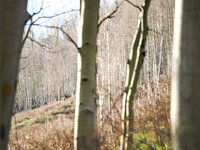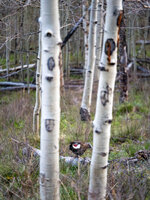patagonialuke
Lil-Rokslider
- Joined
- Sep 26, 2024
- Messages
- 129
TLDR: I'm looking for uncropped photos where the distance to the subject is known (with any semblance of accuracy), as well as the focal length at which the image was taken. Goal is to get a better idea of what to expect in terms of the magnification provided by various focal lengths.
Longer Version:
I'm in the process of figuring out which longer lens to add to my small collection, now that I'm finally getting more serious about wildlife photography (I mostly shoot outdoor action sports). While there's tons of helpful general advice out there, I'm a bit surprised by how difficult it is to find useful examples of subjects at different distances and the relationship between that and focal length.
However, I figure if there are any photogs out there who also carry rangefinders and/or are good at judging distance, I'd find them here.
I've been inspired by the photography of many Roksliders here, and if any of you are able to provide some examples, I'd be very thankful. And I think this could be a helpful resource for others like me who are excited to learn more about the intricacies of wildlife photography in particular.
To start, here's a couple I took yesterday while trying to get an idea of the range / limitations of my longest setup. I'll leave focal lengths in full-frame equivalent to standardize things.
Body: Olympus OM-1 Mk.2 (micro-4/3 sensor)
Lens: Panasonic 35-100mm f2.8 (70-200mm FF equivalent)
Image 1 (uncropped, handheld)
Distance to Subject (closest elk): 262 yards
Focal Length (FF Equiv.): 200mm
Other Details: f/2.8 / ISO320 / 1/1000sec

Image 2 (uncropped, handheld, de-noised in LR)
Distance to Subject (dusky grouse): 15 yards ±2 yards
Focal Length (FF Equiv.): 200mm
Other Details: f/2.8 / ISO10,000 / 1/640sec

Longer Version:
I'm in the process of figuring out which longer lens to add to my small collection, now that I'm finally getting more serious about wildlife photography (I mostly shoot outdoor action sports). While there's tons of helpful general advice out there, I'm a bit surprised by how difficult it is to find useful examples of subjects at different distances and the relationship between that and focal length.
However, I figure if there are any photogs out there who also carry rangefinders and/or are good at judging distance, I'd find them here.
I've been inspired by the photography of many Roksliders here, and if any of you are able to provide some examples, I'd be very thankful. And I think this could be a helpful resource for others like me who are excited to learn more about the intricacies of wildlife photography in particular.
To start, here's a couple I took yesterday while trying to get an idea of the range / limitations of my longest setup. I'll leave focal lengths in full-frame equivalent to standardize things.
Body: Olympus OM-1 Mk.2 (micro-4/3 sensor)
Lens: Panasonic 35-100mm f2.8 (70-200mm FF equivalent)
Image 1 (uncropped, handheld)
Distance to Subject (closest elk): 262 yards
Focal Length (FF Equiv.): 200mm
Other Details: f/2.8 / ISO320 / 1/1000sec

Image 2 (uncropped, handheld, de-noised in LR)
Distance to Subject (dusky grouse): 15 yards ±2 yards
Focal Length (FF Equiv.): 200mm
Other Details: f/2.8 / ISO10,000 / 1/640sec

